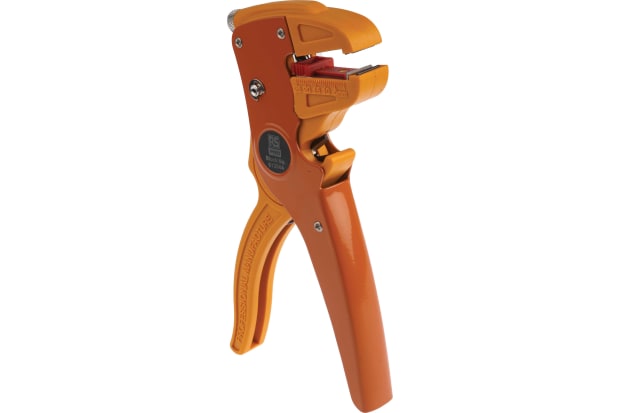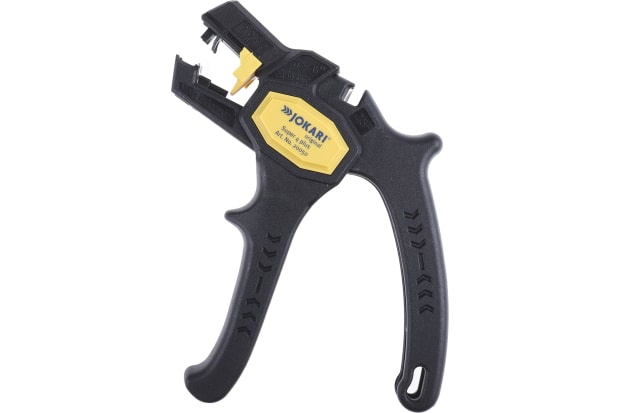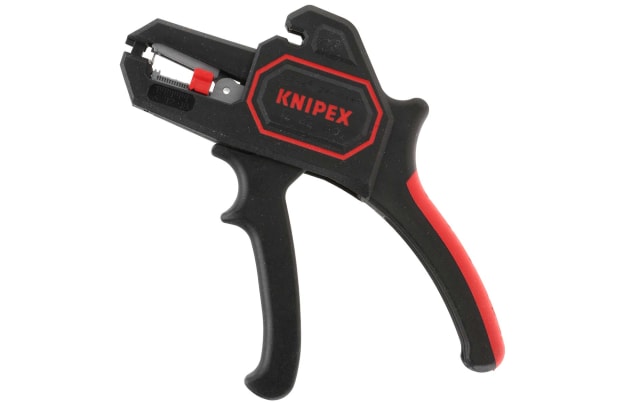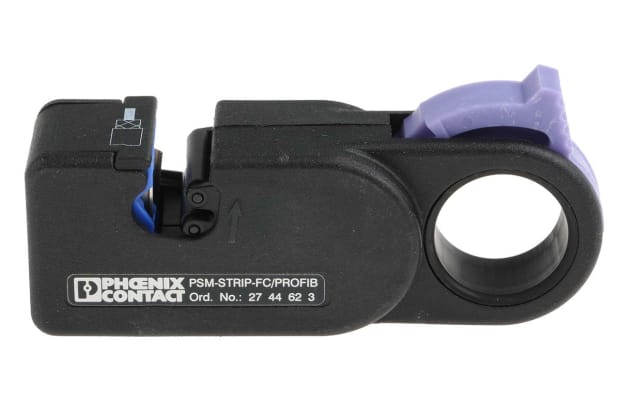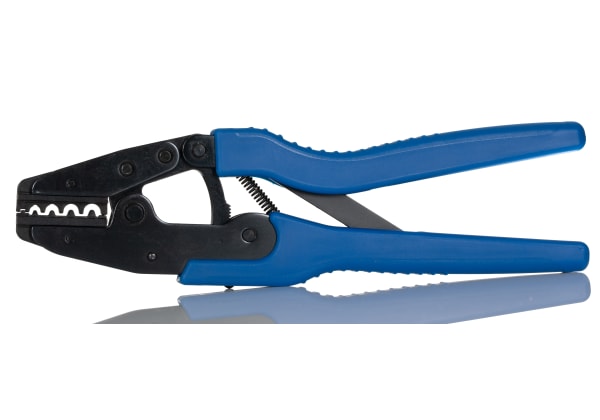- Published 24 Jan 2023
- Last Modified 29 Aug 2023
- 6 min
Wire Stripper Tool Guide
Our guide explains everything you need to know about wire strippers, how to use them, and the best products.

This easy to follow guide explains everything you need to know about wire strippers, including what they are, how to use them, and where to buy the best wire strippers available in the UK.
What is a Wire Stripping Tool?
Let’s start with the basics – just what do wire strippers do? These handheld tools are used to precisely peel back the outer sheath or insulation from the end of electrical wiring to attach a second wire, a terminal, or a connector. Standard methods of attachment like crimping, splicing, or soldering all require access to the wiring core. Wires are sometimes also stripped along their full length for scrappage, but a knife is typically used on these occasions rather than utilising wire strippers.
Commercial wire strippers are a standard electrician’s tool and they are also widely used by electrical engineers. Other models are designed for hobbyists and DIY enthusiasts. Wire strippers are also known as cable strippers and even cable wire strippers.
Types of Wire Stripper
Various models are available, each designed to tackle particular wire stripping tasks, from light insulation peeling to cutting through tougher materials like copper and conduit. Many are based on the classic plier design.
Some of the different types of wire stripper are explained in more detail below:
Manual Wire Strippers
This is the simplest form of wire stripping tool, ideal for lighter jobs which require minimal force. They typically feature spring-loaded, self-opening handles and a safety lock.
Variations include:
- Adjustable strippers – these usually have both manual and automatic adjustment mechanisms; insert a wire and the device will automatically adjust to accommodate, but precise manual adjustments can also be made
- Triple action strippers – these professional models allow users to apply three different types of cutting action – spiral, linear, and rotary. Spiral is particularly well-suited to stripping materials like rubber
- Sheath strippers – by contrast with triple-action models, sheath strippers offer a simple yet effective rotary cut, ideal for leads and cables with two and three cores. They typically also auto-adjust for different diameters
- Pistol wire stripper – these models feature self-adjusting blades which both grip and strip cabling in a single motion
- Steel armoured strippers – these devices feature a reinforced blade designed specifically for cutting through the steel, copper, or aluminium shielding and conduits in fibre optic or armoured cables
- Insulated strippers – these have VDE handles, industry-standard certification that indicates they are insulated from electrostatic discharge
Automatic Wire Strippers
Auto or automotive models have synchronised jaws which allow users to easily cut through and strip away wire sheathing with a single squeeze of the handles.
Laser Wire Strippers
Laser wire stripping tools are a high-end alternative to conventional insulation removal solutions and are favoured when highly precise work is required. This could include cabling with an exceptionally narrow diameter, unusually tough insulation material, or cabling that is very specialist, such as cabling for use with medical equipment.
Laser radiation emitted by the tool vaporises the insulation material, but the inner components are highly reflective and so are unaffected by the standard beam. If the cable includes any metal shielding, a different type of laser can be used for cutting.
Laser wire strippers are usually desktop systems. Different models have varying capabilities and specialisms.
How to Use a Wire Stripping Tool Safely
Wire stripping is a crucial, everyday job for electricians and engineers, but like any task involving electrical equipment, safety considerations are crucial. Wire strippers are designed for safety. You can strip smaller wires with a sharp knife, but as a specialist tool, wire strippers are much safer and minimise the risk of injury.
Safety considerations vary according to the type of wire you are working with. Here are a few guidelines:
- Thin wires are highly vulnerable to damage during the stripping process so proceed with caution and use a suitable adjustable stripping tool. This includes TV and broadband cables
- Plastic sheathed cabling will require an initial pass with a specifically-designed stripping tool, in order to access the multiple, individually-sheathed wires within
- Electrical cables are potentially dangerous so ensure that they are not live before undertaking any work on them. Follow standard electrical safety procedures. Choose strippers with insulated handles for additional safety and pay close attention during the procedure to ensure that nothing is damaged as this could cause hazardous electrical faults
- Some types of wiring, such as coaxial cabling or wall and ground installations, should only be worked on by fully trained professional electricians
What is the Best Wire Stripper?
The best electrical wire stripping tools depend on the specifics of the task. When buying tools for use with electrical equipment, you simply cannot afford to compromise on safety or reliability. We have a full range of wire strippers for sale, capable of tackling cabling from 0.02mm to 70mm in diameter, all ideal for electrical cable installations, telecommunications equipment, and more.
Here is a selection of leading brands:
Popular Brands
RS Pro
Shop the full range of wire strippers available from RS Pro, our own in-house brand.
Jokari
Suitable for use with a variety of wire sizes and cable types, shop our full range of Jokari wire strippers.
Knipex
Browse the full range of high-quality wire strippers available from leading brand Knipex.
Phoenix Contact
See our extensive variety of Phoenix Contact wire strippers and shop online with RS.
FAQs
Can You Strip a Live Wire?
Stripping or cutting live wires is not a sensible idea as it is potentially very dangerous. However, professional electricians are required to work with live wiring on occasion, and several models of stripper and plier feature electrically-insulated handles for these tasks.
The pliers should be used to manipulate the wire, ensuring that it does not come into contact with your hand or anything else. The wire can then be inserted into the stripping tool. Safety gloves can provide additional protection but may make precise work more difficult. Careful attention is required throughout, and only fully qualified professionals should complete tasks involving live wiring.
What is the Easiest Way to Strip a Wire?
The quickest and easiest way to strip wire is to use a suitable tool. Wire strippers are specially designed for the task and can make short work of even the thinnest wires and the trickiest jobs.
Here is how to strip wire safely:
- Choose the right wire stripper for the cabling that requires work. Factors which should be considered include the gauge (diameter) of the wire, its function, and the presence of any metal shielding
- If you know the gauge, match it to the corresponding notch on the jaws of the wire stripper. Alternatively, if you do not know the gauge or the notches on the stripper are not labelled, place the wire in each until the sizes match
- Insert the wire into the correct notch, a few inches in, and close the jaws of the stripping tool a few inches from the end of the wire. If you have selected the correct gauge, the tool should cut through the insulation or sheath easily without damaging the core. Do not apply too much pressure to the handles
- Rotate the wire to make sure your cut runs around the full circumference
- Now that you have a firm grip, slide the stripper off the wire – the insulation will detach smoothly
Related Guides
Related links
- The Complete Guide to Cutters
- RS PRO Wire Stripper 0.8mm Max, 155 mm Overall
- Pressmaster Replacement Cassette for use with 16 sq.mm Wire Stripping Tool
- Weidmuller Stripax Series Wire Stripper 10 mm² Max
- Phoenix Contact Cable Stripper Blade Cable Stripper for use with...
- How to Crimp Wires
- RS PRO Triple Action Wire Stripper 40mm Max
- RS PRO Wire Stripper 6mm Max, 203 mm Overall
